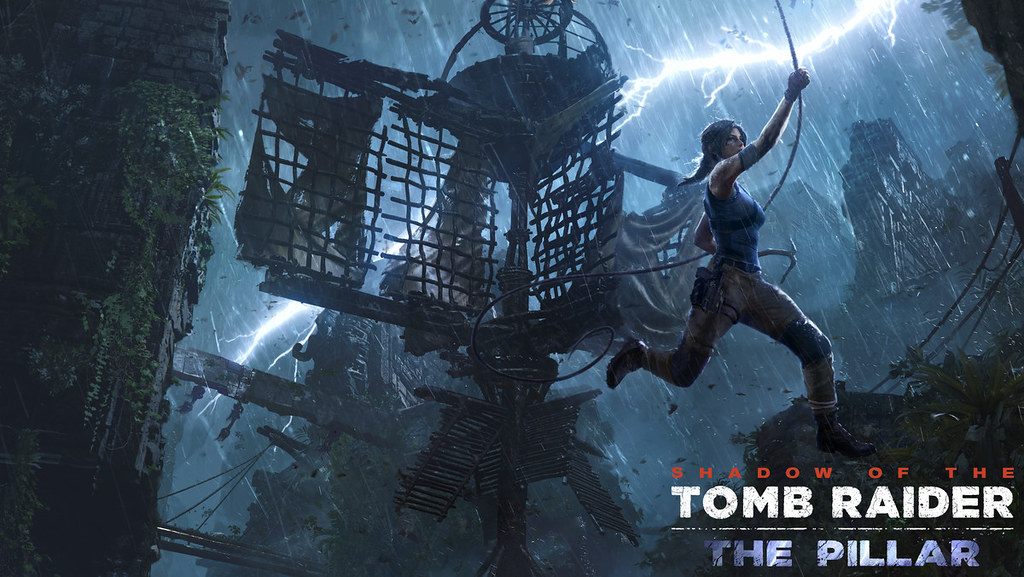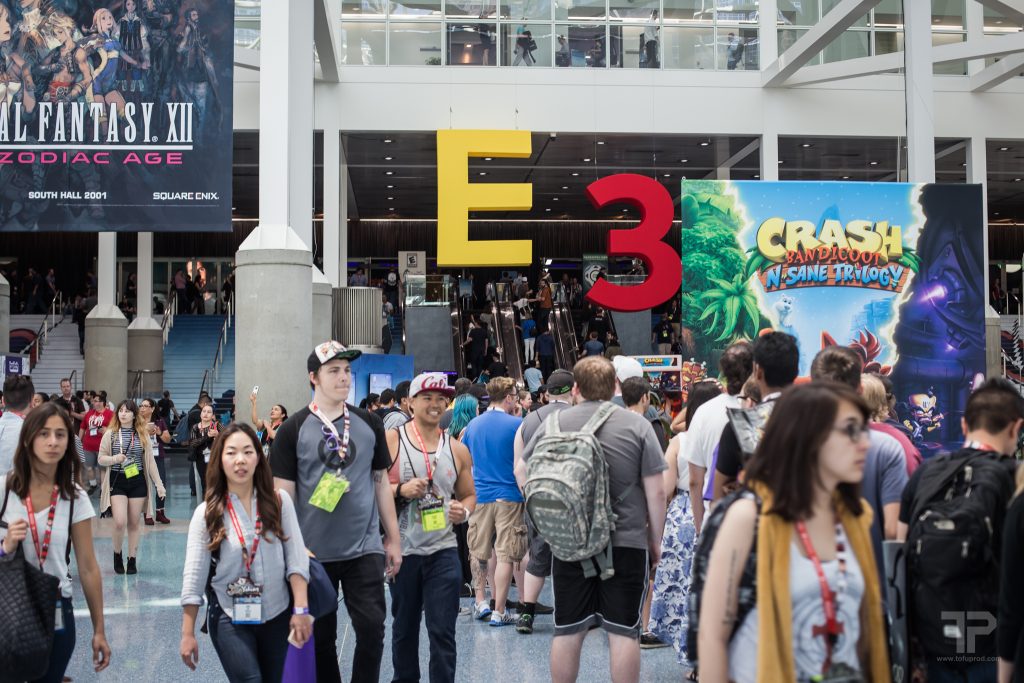Video games are a global phenomenon. As discussed on this website before, many Western made video games propagate certain tropes and prejudices about non-Western cultures and histories. Even though there is a large world of non-Western developers, they seem unable to challenge the Western-dominated field. Marcel Keurentjes analysed this inequality of power in video game development in his Master Thesis at Leiden University. This piece is a summarized version of his work. The entire thesis can be accessed here.
Introduction
Through my experiences as a “gamer” I have experienced many Western developed games that took place in the so-called Global South, such as The Uncharted Series, The Tomb Raider Reboot Trilogy, Red Dead Redemption I, Assassin’s Creed: Revelations and Age of Empires 3. The Global South is a theoretical concept which is used to identify lower-income countries. In contrast, the Global North is a concept used to identify higher-income countries. This north-south divide is not a geographical one. For example, Australia is part of the Global North, but Turkey is part of the Global South. As a historian with a particular interest in the Global South I contend that many Western representations of the Global South in video games fall into conceptual traps such as othering, orientalism, colonialism, and the white saviour trope (Bernasconi, 2005; Said, 1978; Mukherjee, 2016; Bandyopadhyay, 2019).
According to philosopher Robert Bernasconi the process of othering is constituted by our use of discourse, which means the way we think, speak, and act towards something. For example, the man is the other to the woman and vice versa, because we accept this discourse in our society. He also acknowledges that this process of othering occurred when the West encountered Non-Western cultures.
Orientalism is about the Western construct of the East, mainly Asia. It is a form of othering and could be applied when discussing Western representations of Asia. The founder of this concept, Edward Said defines it in the following way: ‘Orientalism can be discussed and analyzed as the corporate institution for dealing with the Orient – dealing with it by making statements about it, authorizing views of it, describing it, by teaching it, settling it, ruling over it: in short Orientalism as a Western style for dominating, restructuring, and having authority over the Orient.’ Asia is constructed as the other to the West. Therefore, Asia is everything that the West is not, and vice versa. For example, the West is represented as “under control” while Asia is represented as chaotic.
The concept of colonialism is also very prevalent in historically themed videogames developed in the Western world. Colonialism means that a country controls another country or area and its populace. The white saviour trope is also a recurring representation regarding Western developed games about the Global South. According to sociologist Ranjan Bandyopadhyay the white saviour complex refers to western people feeling the need to “fix” the problems of suffering nations or people of colour. He compares this modern example with the white man’s burden of the late 19th and early 20th centuries.
What is also interesting is that, in the last two decades or so, developers from the Global South increasingly sought to establish their own video game studios. A great number of these studios released games in which they took control over how their history, culture, and way of life are represented in games.
These two types of games are also visible in the historiography of historically themed video games. Basically there are two dominant perspectives in this field: Western made video games set in the Global South, and video games set and developed in the Global South. In Western developed games, the Global South is, for example, sometimes/often represented as the agency-less other. In the case of the latter, the Global South is represented by the people living in it. It covers the ways in which video game developers from the Global South added to, differed from, or changed the representations made about their counties in the Western world. This is called indigenous agency (Hendry, 2005).
This historiography is missing an important part, which is a discussion about the impact historically themed video games set and developed in the Global South have on a global scale. For example, Naughty Dog’s Uncharted: The Lost Legacy has sold 2.37 million copies worldwide (vgchartz.com). As a contrast, another action-adventure video game Hanuman: Boy Warrior, which was developed in India, has sold 90.000 copies (Mukherjee 2015). Both games are set in India, but the reach, quality and reviews differ enormously (Metacritic.com; Kotaku.com; gamasutra.com; Mukherjee, 2015). I am therefore wondering whether historically themed video games set and developed in the Global South really have the power to add to, differ from or change the representations made about their counties in the Western world. If so, is the video game industry yet another arena in which there are global power inequalities between the Western world and the Global South? This is rather important to address, because in its essence this is about who has the power to represent whom.
The West
Two examples from Western made video games set in the Global South are Shadow of the Tomb Raider and Assassin’s Creed: Revelations. In Shadow of the Tomb Raider you follow Lara Croft in her search for the mythical silver box of Ix-Chel, which is the Mayan goddess of midwifery and medicine. Lara’s quest takes her from the Mexican Cozumel Island to the Jungles of Peru. On this quest to find the box she also raids other indigenous artifacts, such as masks and sacrificial knives. Furthermore, Lara opens a few crypts which houses sarcophagi belonging to indigenous leaders. Lastly, there are also parts in the game which take place in Croft manor back in England. The manor is full of indigenous artifacts, such as Mayan statues, Persian lions, and Egyptian mummies with their sarcophagi. The game represents indigenous artifacts as something to possess, which I consider to be a colonialist narrative trope. Throughout most of modern European history it was basically practice to steal these non-Western artifacts and to display them in the major museums of European capitals. At the time these actions were justified because we “saved” these artifacts from extinction. Furthermore, it was a way to show the extent and glory of these specific empires. While most of these artifacts still dot the halls of these major museums, the practice to steal more non-Western artifacts have winded down. However, in videogames, such as the Tomb Raider and Uncharted series, these tropes still persist. Furthermore, the main issue with Shadow of the Tomb Raider is that it is ambiguous. The game tries to teach you about the cultures of the Maya, the Inca, and the Aztecs and Lara is helping these people too, but she is also robbing them of their artifacts. This feels a bit lopsided.

In Assassin’s Creed: Revelations you follow the Italian assassin Ezio Auditore da Firenze while he travels to the Istanbul of 1511-1512 in order to find several keys to open a secret library. When he arrives in Istanbul he meets his fellow assassins under the leadership of Yusuf Tazim. Yusuf has two problems: he is incapable of defeating the Templars in the city and the succession crisis of the Ottoman Sultanate, which Yusuf believes the Templars will use to infiltrate the Ottoman court. These are problems for him because it could shift the balance of power between the Assassin’s and the Ottomans in the city. In both of these problems the Ottomans are agency-less and depend on Ezio to solve their predicaments. Early in the game Yusuf and his Ottoman assassins are attacked in two locations in Istanbul. Ezio and Yusuf decide that it is best to split up. In Ezio’s struggle he drives off the attacking Templars, but Yusuf was incapable of doing so. So, Ezio has to drive off these Templars as well. Throughout the rest of the game it is Ezio and not Yusuf, who recruits new Ottoman assassins, establishes new bases for the assassins throughout the city and diminishes Templar influence. Yusuf’s second problem is interesting because, except for the Templar plotline, the Ottoman succession crisis is historically accurate. During the last years of the reign of Sultan Bayezid II (r. 1481-1512) his sons Ahmet, who is revealed to be the Grandmaster of the Byzantine Templars, and Selim both wanted to succeed their father, but Bayezid II had already chosen Selim as his successor. Furthermore, Selim was favoured by the janissaries, who were the Ottoman Sultan’s household troops. Because Selim is an obstacle for Ahmet he tries to overthrow him. It would be a terrible blow for the assassins if Ahmet succeeds his father on the throne, so it becomes an important objective to prevent this from happening.
In the game Ezio plays a huge part in this conflict. After finding out that the Templars had already found one of the keys under Topkapi Palace, which was the seat of the Ottoman court in Istanbul, Ezio decides that he needs contacts within the Ottoman court. His contact becomes none other than the future Ottoman Sultan Süleyman I (r. 1520-1566). In order to forge a bond Ezio decides to help Süleyman figure out the power struggle at the court, because Süleyman is seemingly unable to figure it out himself. In subsequent events it is Ezio who brings the plots of the janissaries to light and who in the end delivers the traitorous Ahmet to his brother Selim. The representation of the Ottoman Turks is that they are unable, and thus agency-less, of solving their predicaments without the help of the superior Western protagonist. This follows the white saviour narrative.

The Global South
Two examples from video games set and developed in the Global South are Bhagat Singh and Mulaka. In Bhagat Singh you follow Indian freedom fighter Bhagat Singh (1907-1931). The story is about Singh’s two acts of anti-imperialism, or terrorism from the British perspective. Singh was responsible for the assassination of British police officer John Saunders in Lahore and the bombing of the Central legislative council in Delhi. This game is a fine example of indigenous agency because of two reasons: the telling of a story about an Indian hero and that this hero’s targets are British imperialists. Indian developers Lumen Phon Multimedia and Mitashi Edutainment tried to tell the story of the Indian hero and his struggle against imperialism. They took the representation of their history and culture into their own hands. Singh’s targets are British imperialists, which is quite uncommon in gaming. In Western games the targets of, your mostly Western heroes, are often non-Western people. Therefore, I also argue that this second reason could be interpreted as a critique of the standards in Western gaming.
In Mulaka you play as Mulaka, who is a Tarahumaran sukurúame. A sukurúame is a shaman who is tasked with saving the universe. But before Mulaka can save the universe he has to gain the support and power of several demigods. These demigods help Mulaka traverse the landscape of the Tarahumara, such as the Samalayuca dune fields in Chihuahua. But these demigods also help Mulaka against various enemies, such as the Ganokos, who are giants in Tarahumaran mythology. Tarahumaran culture is also hearable in the music, which is performed by the Tarahumarans themselves. An intriguing indigenous gameplay mechanic is Mulaka’s unending stamina, meaning that he can run endlessly without tiring. This is culturally accurate, because the Tarahumara are renowned for their long-distance running ability (Escandell-Montiel, 2020). Mulaka is another example of indigenous agency. By working with the Tarahumara the developers at Lienzo represented their history, culture, and mythology inside a video game.
The videogame industries of the Global South
Looking at the range, distribution and reception of historically themed video games from the Global South, I argue that they are in multiple ways minimized in their reach and therefore their ability to counter the Western narratives in games.
An example of the smaller range is the lower popularity of historically themed games compared to other genres in the Global South. In India for example mobile game adaptations of popular Bollywood movies sell amazingly well. A development studio from New Udupi, called 99Games, released Dhoom: 3 The Game in 2013, which sold around 10 million times. Compare that with the Indian developed historically themed game Hanuman: Boy Warrior, which sold around 90.000 copies. However, this conclusion can also be made for the Western market, even though the difference is way larger in the Global South.
An example of a development is that video game companies in the Global South are poorly represented in video game expos around the world, which limits their marketing reach. I have based this on a reading of company attendance in major expos across the last few years, such as E3 in Los Angeles, Paris Games Week in Paris, Gamescom in Cologne, PAX East in Boston, Tokyo Game Show in Tokyo, Brasil Game Show in Rio de Janeiro and Sao Paulo, and China Joy in Shanghai, Western and Japanese companies are strongly represented. While Brazilian companies are of course represented during Brasil Game Show, they are not represented outside of this event. Exceptions are videogame companies from China, who are increasingly present from the late 2000’s onward, showing China’s rise in the industry. However, a new marketing trend has also occurred in the 2010’s, which is to market the newest games and hardware outside of these expos by uploading streams and trailers on internet websites such as YouTube. This platform is also big in countries such as India. One should only remember the epic battle between Pewdiepie and T-Series in 2018 and 2019. For video game companies from the Global South uploading trailers online is a great opportunity for marketing their games, but their view numbers are nothing in comparison with a regular Nintendo Direct or a trailer from a Western developed historically themed video game. For example (as of March 4, 2021), the latest Nintendo Direct has 1,9 million views and the trailer for Shadow of the Tomb Raider has 3,8 million views, while the trailer for the Indonesian developed Pamali: Indonesian Folklore Horror: The White Lady has 59 thousand views. However, non-historically themed games from the Global South have amazing view numbers. The already mentioned Dhoom 3: The Game has 7,7 million views.


Based on these conclusions I argue that historically themed video games set and developed in the Global South do not (yet) have the power to add to, differ from or change the representations made about their counties in the Western world, due to multiple factors such as audience and reach. The West is able to represent the Global South from its perspective, but the Global South is not able to combat this. At the moment historically themed video games set and developed in the Global South are drops of water in the ocean of historically themed games set in the Global South. This means that the video game industry is yet another arena where global power inequalities between the Western world and the Global South exist. This crooked representation should be considered when talking about video games set in the Global South. However, the number of high-quality historically-themed games from the Global South has been rising since the mid-2010’s, which I believe can start changing this crooked relation.
Cinema and personal reflection
Besides video games these conclusions are also valid for other media, such as cinema. The movie industry is dominated by Western/American studios. And just like in the video game industry the influence of popular movie industries from the Global South has been growing since the mid-2000’s. The most important example is that of Bollywood, a well-known billion dollar industry. Another, lesser known, example is the Nigerian film industry known as Nollywood. But however big these two industries are, they are dwarfed by the Hollywood film industry. Based on net worth in 2019 Hollywood was worth around 42 billion dollars, Bollywood around 2 billion and Nollywood between 500 million and 1 billion. And just like with video games you see that first Japanese studios (since the mid-nineties, even earlier if you include some of Kurosawa’s movies) and then Korean studios (since the early 2000’s) began to expand on a global scale. Examples are Shichinin no samurai, Ringu, Oldboy and Parasite. One of the differences are Chinese films, which were already expanding since the late nineties/early-2000’s, with for example the highly popular Crouching Tiger, Hidden Dragon. However, the film was co-produced with Columbia Pictures and the director lived in America. So, maybe we are seeing a trend in which better quality media from the Global South are expanding to a global market, but they are nonetheless still dwarfed by the size of Hollywood and other Western companies.
As a Western gamer, but also as a historian, I am part of the problem which I have been discussing in this piece. The genre of historically themed video games is dominated by Western studios, and their customers are mostly Westerners living in the Western World. This has also been touched upon by Emil Lundedal Hammar: ‘the production, distribution and consumption of historical videogames are highly conditioned by the social and economic power hierarchies in which producers operate.’ Because video game developers and publishers need to make a profit they make games that they know will sell by telling a story they know their primary audience would be invested in. This is an important argument why the Global South is depicted as it is in Western games production. What their audience like is based on assumptions: ‘As such, I propose that their assumptions rest on implicit notions about identity cultivated by the hegemonic values of the society they live in. This means that my informants reproduced their own biases about gender, race, sexuality, ethnicity, age, and social class, and how these categories influenced who would be “the target market,” i.e. those with purchasing power’. So, historically themed video games are structured by the hegemonic mass culture in which they are produced. For the majority of the players it is therefore more appealing to play as an American guy called Nathan Drake than a Mysori sultan called Fateh Ali Tipu. And the general public are not Maya, so when a sacred Mayan object gets stolen by a British archaeologist, they don’t really care. Maybe as a historian who is specialised in Non-Western Studies (which is also a Western construct) I notice these narrative choices more often, but I am also aware that these narratives could be problematic in the long-run as we could believe that the Global South is really like this. This could have an effect on how we treat the Global South and its peoples. Furthermore, the whole idea of a Global South and a Global North is also a frame from a Western way of mind. However, I also really like these games and if a new Uncharted or Tomb Raider is announced I will probably pre-order it. This attitude contributes to the dominance of Western discourse within media such as the video games industry. A rather difficult conundrum indeed…
References

Marcel Keurentjes (1995) has studied history at the University of Groningen and the University of Leiden. During these studies he has specialised himself in the history and development of countries in the Non-Western world. In this field of research he is mostly fascinated by processes of change within Non-Western countries which have occurred through centuries of contact, cooperation and conflict between the colonisers and the indigenous population.

